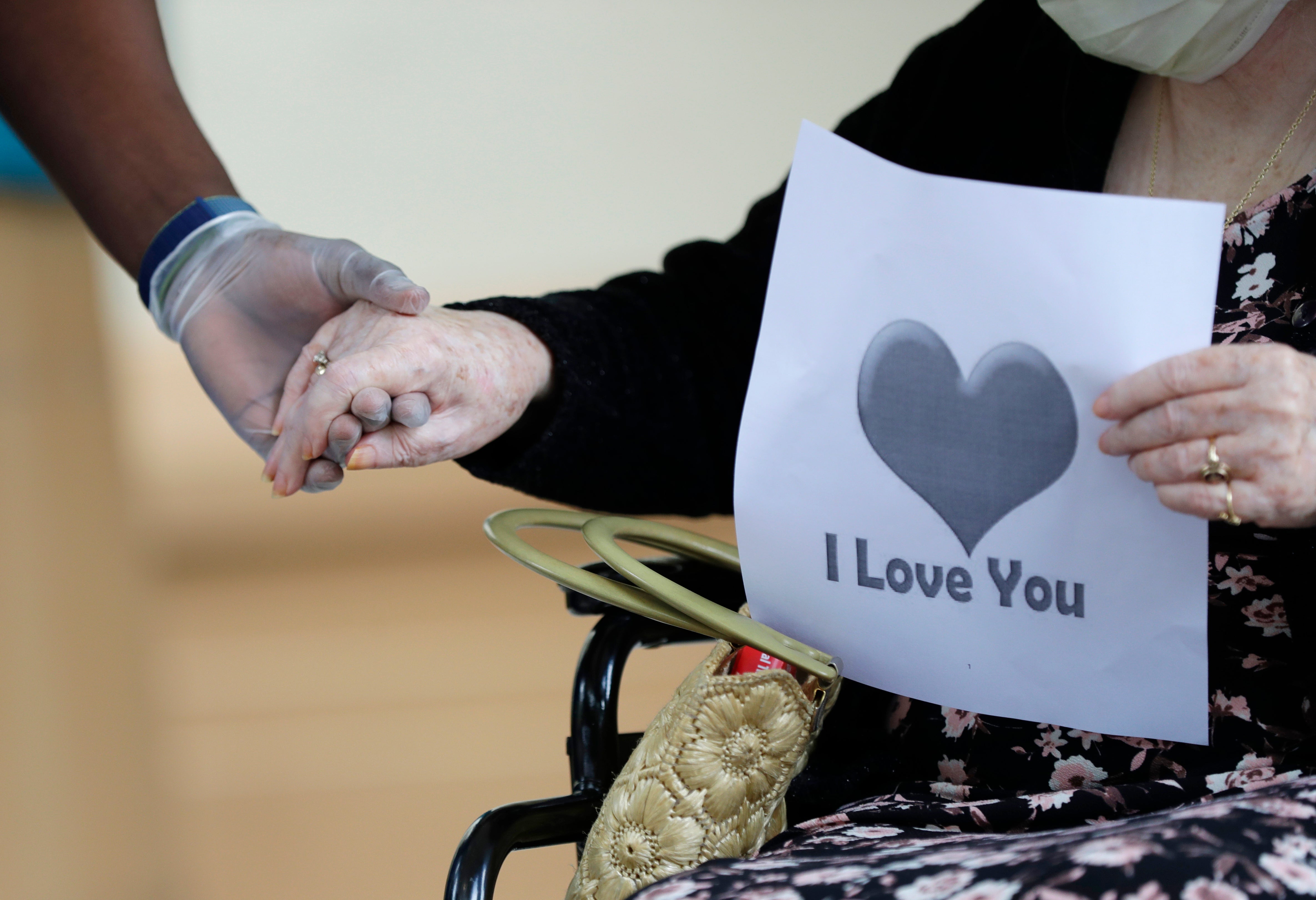1 in 5 nursing homes short on PPE and staff in virus rebound
WASHINGTON (AP) — One in five U.S. nursing homes faced severe shortages of protective gear like N95 masks this summer even as the Trump administration pledged to help, according to a study released Thursday that finds facilities in areas hard-hit by COVID-19 also struggled to keep staff.
Significantly, there was no improvement from May to July in the shortages of personal protective equipment, known as PPE, or in the staffing shortfalls, according to the analysis of federal data by academic researchers. The summer has seen the coronavirus surge across the South, and much of the West and Midwest.
People living in long-term care facilities represent less than 1% of the U.S. population, but account for 43% of coronavirus deaths, according to the COVID Tracking Project. Similar glaring disparities have been seen with nursing home residents in other countries, but in the U.S. the issue has become politically sensitive for President Donald Trump, who is trying to hang on to support from older voters in his reelection bid.
“A study that shows that 1 in 5 nursing homes has a severe shortage of PPE and a shortage of staff, and that it did not change from May to July, should be a massive red flag,” said Terry Fulmer, president of the John A. Hartford Foundation, a nonprofit that works to improve care for older adults.
“We have had no coherent federal response,” added Fulmer, who was not involved in the research.
Reacting to the study, the federal Centers for Medicare and Medicaid Services said in a statement that the Trump administration “has provided nursing homes the tools they need to stop the virus’ spread and, ultimately, each nursing home is responsible for its residents’ safety.” CMS sets nursing home standards and pays for much of the care.
The study published in the journal Health Affairs looked at two periods of four weeks each earlier this summer, from mid-May to mid-June, and from the latter part of June to mid-July. Large outbreaks in nursing homes have been reported in many states since the end of February.
Researchers from the University of Rochester in New York, Harvard Medical School and the Harvard T.H. Chan School of Public Health analyzed data provided by nursing homes to the government at the behest of the Medicare and Medicaid agency, CMS.
They found that during the early part of the summer, 20.7% percent of nursing homes reported a severe PPE shortage, with one week or less of available supply. Shortages of N95 masks — recommended for health care providers — were the most common. The situation had barely changed by midsummer, with 19.1% of nursing homes reporting severe shortages.
As far as staff shortages, 20.8% of nursing homes reported deficiencies in early summer. Commonly those involved nurses and nursing aides. By midsummer, 21.9% of nursing homes reported staff shortages.
Adequate levels of protective equipment and nursing staff are essential components in any infection control plan, experts say, and persistent shortages can feed a vicious cycle that raises risks both for residents and staff.
The study found that high rates of PPE shortages were seen in Iowa, Alabama, North Carolina and Tennessee, which have struggled to contain the virus this summer.
Nursing homes that reported PPE shortages were more likely to be for-profit, part of a chain, and to have COVID-19 cases among residents and staff.
The report found high rates of staff shortages clustered in the South and Midwest, especially Louisiana, Alabama, eastern Texas and Georgia.
Facilities that were government-owned, received higher shares of their earnings from Medicaid, and had lower quality ratings were more likely to confront staffing shortages.
“We have been slow to provide resources to nursing homes, and when we have provided them, they have been inadequate,” said Harvard health policy professor David Grabowski, one of the study authors.
An initial federal effort to supply PPE was widely panned by nursing homes, and Grabowski said a new push to supply N95 masks will probably come up short unless it is sustained. There are about 1 million shifts a day total in nursing homes, he said, and that means very large quantities of N95 masks are needed.
Separately, the Trump administration is trying to supply 14,000 nursing homes with fast-test machines to screen residents and staff for COVID-19. That effort is underway, but isn’t scheduled to be completed until the end of September.
“The federal government should really own this issue,” Grabowski said.
Addressing staffing shortages is seen as the more difficult problem, since nursing home pay is low, and with COVID-19, health risks to workers are high. Grabowski said Congress should earmark money to raise the wages of caregivers. But coronavirus legislation is stalled.
Foundation executive Fulmer said she’s forecasting that the staffing shortage in nursing homes will only get worse.
“These individuals are putting themselves and their families at risk, when they can get minimum wage in other ways,” Fulmer said. “People are just going to say, ‘Enough is enough.’”



